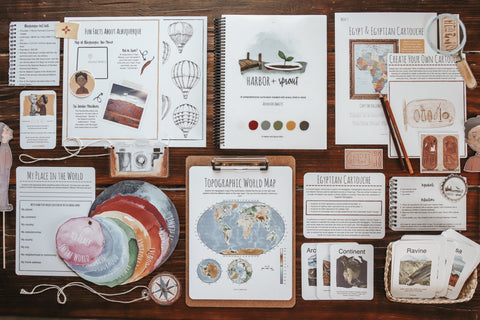
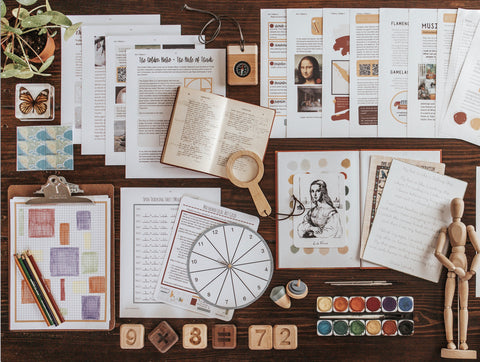
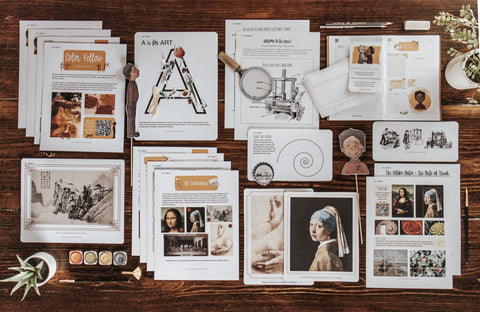
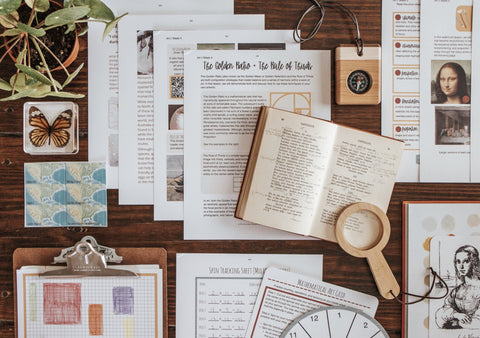
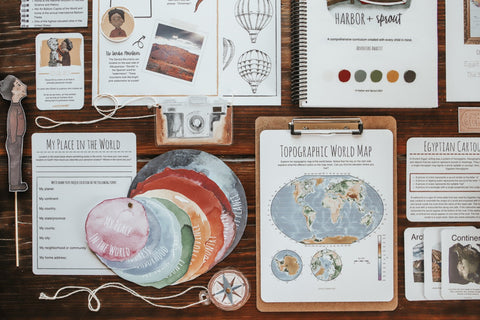
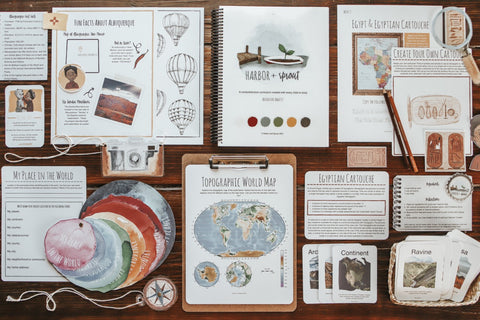
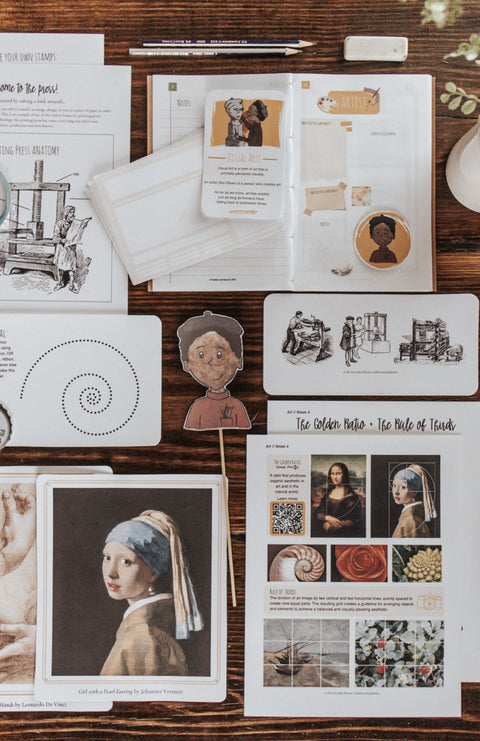
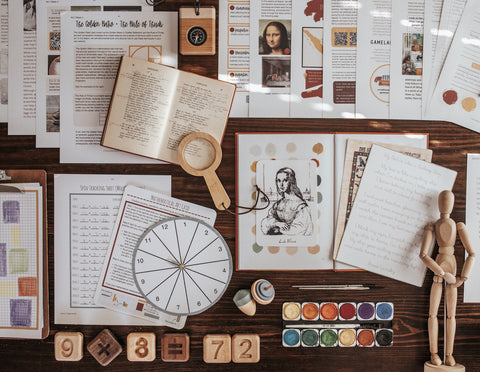
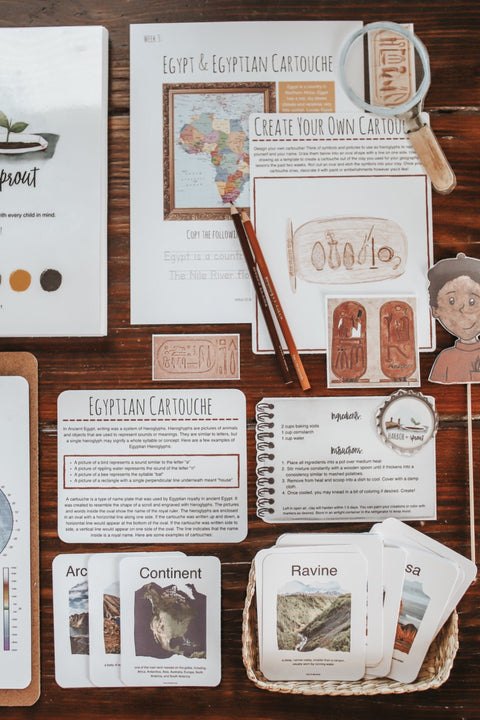
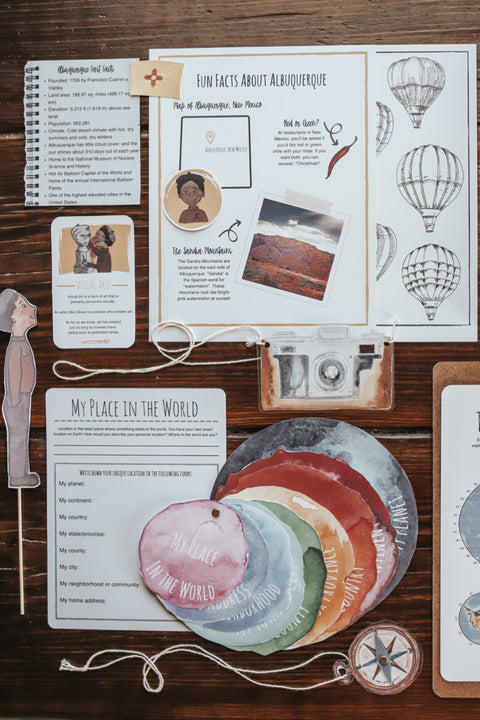
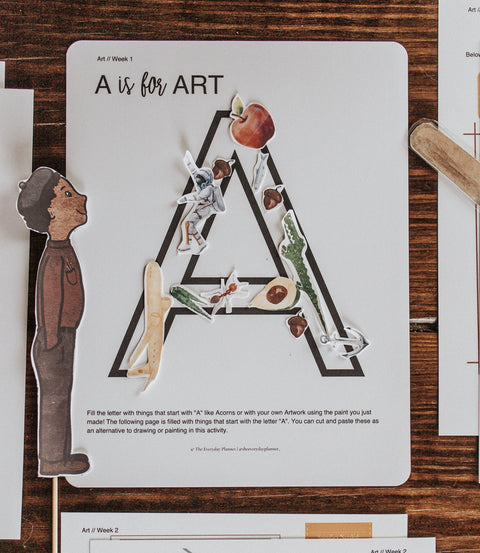
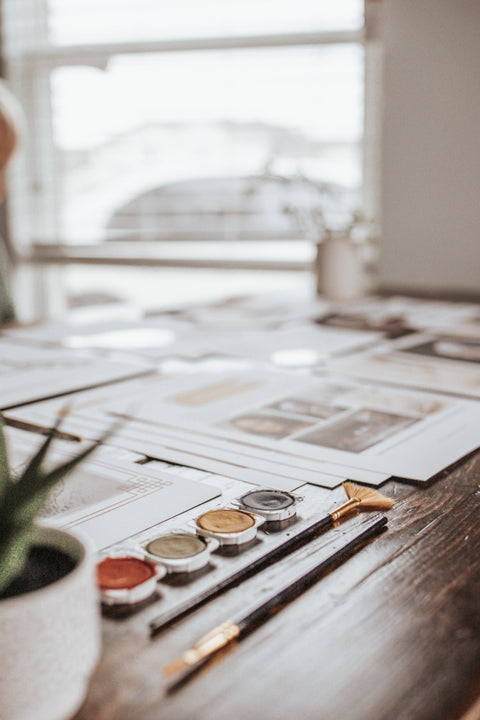
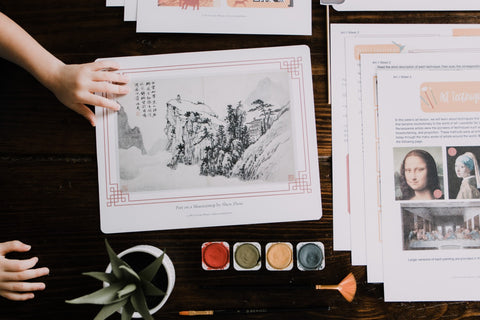
Harbor and Sprout
Visual Arts Patchwork Study
Welcome to the Harbor + Sprout Visual Arts Patchwork Study, originally released in August 2021 and updated in October 2024. This elementary level unit study features 36 lessons covering all 9 of our core subjects plus a playful supplemental section of thematic activities. This unit study is meant for use by children ages 3-12.
This unit is delivered via a secure link as a digital download.
Handbook
Daily, weekly, and monthly planning pages
Supply List
Book list including stories, poems, and field guides with recommended ages, subject correspondence, and brief summaries for each title
Lesson adaptation ideas for 4 levels of learning
Scope and Sequence
Family read aloud with discussion guide and recipe
Character kit- new monthly character illustrated by Stephanie Groves
Science
Lesson 1: What Exactly is Color? In this lesson, you will explore how light creates the beautiful colors that surround you. You will label anatomy of an eye, create a color changing illusion and walking water project, and learn how to use a color wheel.
Lesson 2: Is it Possible to Capture Light? In this lesson, you will explore the history and science of photography and the technology that helps create magnificent snapshots. You will label camera anatomy, build a camera obscura, and design a zoetrope.
Lesson 3: Can a Building be Art? In this lesson, you will explore how engineering meets art through architecture and design styles. You will color and trace architecture, build your own arch, and look for architectural features around your community.
Lesson 4: What is Digital Art? In this lesson, you will dive into the digital age by exploring how technology has changed and shaped art as we know it. You will identify 2D vs 3D shapes, complete a pixel art mystery, and take a virtual digital art field trip.
Nature Study
Lesson 1: What is Colour? In this lesson, you will explore reflected light, also known as color. You will discover why objects take on certain colors, how light waves take on different colors, the colors that make up the visual spectrum which looks like a rainbow.
Lesson 2: Why is the Sky Blue? In this lesson, you will discover the answer to the age old question: why is the sky blue? You will learn about light waves and how all the gases and particles in the Earth’s atmosphere interact with light to create the color of the sky.
Lesson 3: Why are Plants Green? In this lesson, you will explore what makes plants green. You will learn about chlorophyll, photosynthesis, organic pigment, and how all these plant characteristics work together to create the most common color in nature.
Lesson 4: Why is the Ground Brown? In this lesson, you will discover dirt is mostly brown, although it can be red, black, white, or yellow. You will learn how decomposers, carbon, light, and a variety of minerals all contribute to the color of dirt.
Language Arts
Lesson 1: Comic Strips- In this lesson, you will explore storytelling through comic strips. You will learn key elements, general formatting, unique characteristics, and typical themes of comic strips and where you would most likely encounter one.
Lesson 2: Sensory Detail- In this lesson, you will discover imagery as a literary device and how it helps paint a picture with words. You will explore sensory detail which is the writer’s appeal to the five senses: sight, hearing, smell, taste, and touch.
Lesson 3: Beginning Sounds and Alliteration- In this lesson, you will explore alliteration which is using the same beginning sound for two or more words close together. You will learn what constitutes as alliteration and what does not, then you will read and try tongue twisters.
Lesson 4: Storytelling With Story Stones- In this lesson, you will discover story stones which are stones or pebbles that help you retell your favorite story or inspire you to make up new stories of your own. You will make your own storytelling stones and try new storytelling techniques.
Writing
Lesson 1: Brainstorm and Prewriting- In this lesson, you will begin the writing process with the unit topic: choose an art medium, tool, or technique to research and write about. You will follow the brainstorm guide and start your prewriting mind map.
Lesson 2: Research and Outline- In this lesson, you will begin researching your art technique or medium. You will ask questions, find answers, take notes, and list resources that will help you create a report all about your topic.
Lesson 3: First Draft- In this lesson, you will start to take the information that you’ve collected and the ideas you’ve formed and put them to paper. You will use a writing template or blank sheet of paper to write your first draft of your visual arts report.
Lesson 4: Revise and Proofread- In this lesson, you will finalize your report. You will read through your first draft, make any changes that would help your writing, read your research again, correct any mistakes, and write your final draft. Don’t forget to save it!
History
Lesson 1: Art- The Beginnings- In this lesson, you will discover that art dates as far back into history as recorded information can take us -- so the very beginning. You will learn about prehistoric art, social importance of art, and significant artists.
Lesson 2: Leonardo da Vinci & Michelangelo- In this lesson, you will discover that art dates as far back into history as recorded information can take us -- so the very beginning. You will learn about prehistoric art, social importance of art, and significant artists.
Lesson 3: Printmaking- In this lesson, you will learn the long history of printmaking. You will discover how it came to be, why it was needed, the people that helped develop the process, the tools required, the four major categories of printmaking,
Lesson 4: Photojournalism- In this lesson, you will learn about the history of photojournalism and photojournalist pioneer, Margaret Bourke-White. You will explore the the path from paintings to photography and events that put it on the map.
Geography
Lesson 1: Landforms- In this lesson, you will explore all different types of landforms. You will explore how landforms can be created, how they change, and how landforms experience different weather, climates, and living conditions.
Lesson 2: Topographic Maps- In this lesson, you will learn how to identify and read topographic maps, also known as relief maps. You will discover how these maps show height and depth of mountains, hills, valleys, and other variations.
Lesson 3: Egypt & Egyptian Cartouche- In this lesson, you will explore Egypt - notable landmarks, location on a map, and general climate throughout the country. You will also learn how people of ancient Egypt wrote with hieroglyphs and created cartouches.
Lesson 4: My Place in the World- In this lesson, you will explore the world around you by describing your own exact location on Earth. You will start by learning about your location in the broadest sense and narrow it down all the way to your home address.
Music
Lesson 1: Movements- In this lesson, you will explore the relationship between art and music, how they have changed over time, and how they influenced not only each other but the cultural, social, and philosophical climate around them.
Lesson 2: Joe Hisaishi- In this lesson, you will discover how art and music work together to create anime. You will learn about the life and mission of two anime magicians, Miyazaki and Hisaishi, and about traditional Japanese instruments.
Lesson 3: Ballet and Opera- In this lesson, you will explore how the visual and musical aspects of ballet and opera intertwine to create a holistic artistic experience that engages multiple senses whilst learning about respective productions.
Lesson 4: Stradivarius- In this lesson, you will discover the legendary Italian luthier Antonio Stradivari and how instruments can be masterpieces of both sound and visual art. You will learn why his creations are studied even today.
Art
Lesson 1: Art Elements- In this lesson, you will explore the color yellow, its vast history (dating back all the way to the prehistoric era), and how its natural pigment is created. You will then create your own art by making your own paint and drawing simplified animals.
Lesson 2: Technique- In this lesson, you will learn about art techniques first implemented in the Renaissance era that became revolutionary to the world of art, including, sfumato, chiaroscuro, perspective, foreshortening, and proportion.
Lesson 3: Printmaking- In this lesson, you will learn about a piece of machinery that uses ink to transfer an image, design, or text to a piece of paper or other material called a printing press. You will explore the printing press anatomy and create your own stamp.
Lesson 4: Composition- In this lesson, you will bring math and art together as you explore two composition strategies (and examples of each) that create balance and a sense of harmony within a work of art: The Golden Ration and the Rule of Thirds.
Math
Lesson 1: Mosaics- In this lesson, you will practice patterns and spatial planning through mosaics and tesselations. You will explore common shapes, repeating patterns, symmetry, and historical examples of artists using these mediums.
Lesson 2: Piet Mondrian- In this activity, you will paint with Geometry. You will use your math and artistic skills to explore Cubism (a style Mondrian took on later in life) which is a style of art that breaks objects into geometric shapes, simple lines, and various colors.
Lesson 3: Topology- In this activity, you will learn all about a branch of mathematics called topology. You will explore a variety of shapes, transformations made without cutting or gluing, and the infamous Möbius strip.
Lesson 4: Mathematical Art Grid- In this activity, you will practice counting, operations, and factoring as you create artistic masterpieces. You will create the spinner, track your spins, and challenge yourself with addition and multiplication.
Supplement
- Copywork
- Fill in the Frames
- Spelling
- Vocabulary
- Book Review and Summary
- Revision Practice Sentences
- Writing Reference Pages
- Adjective Cards
- Sun Print Art
- Bilingual Shapes
- Bilingual Crayons
This unit will be delivered digitally as a downloadable zip file. H+S Patchwork Studies average approximately 550-650 pages of content. While the download does include the option to print the full unit straight through front and back, we recommend printing on an as-needed, as-you-go basis. Enjoy your visual arts adventures!
